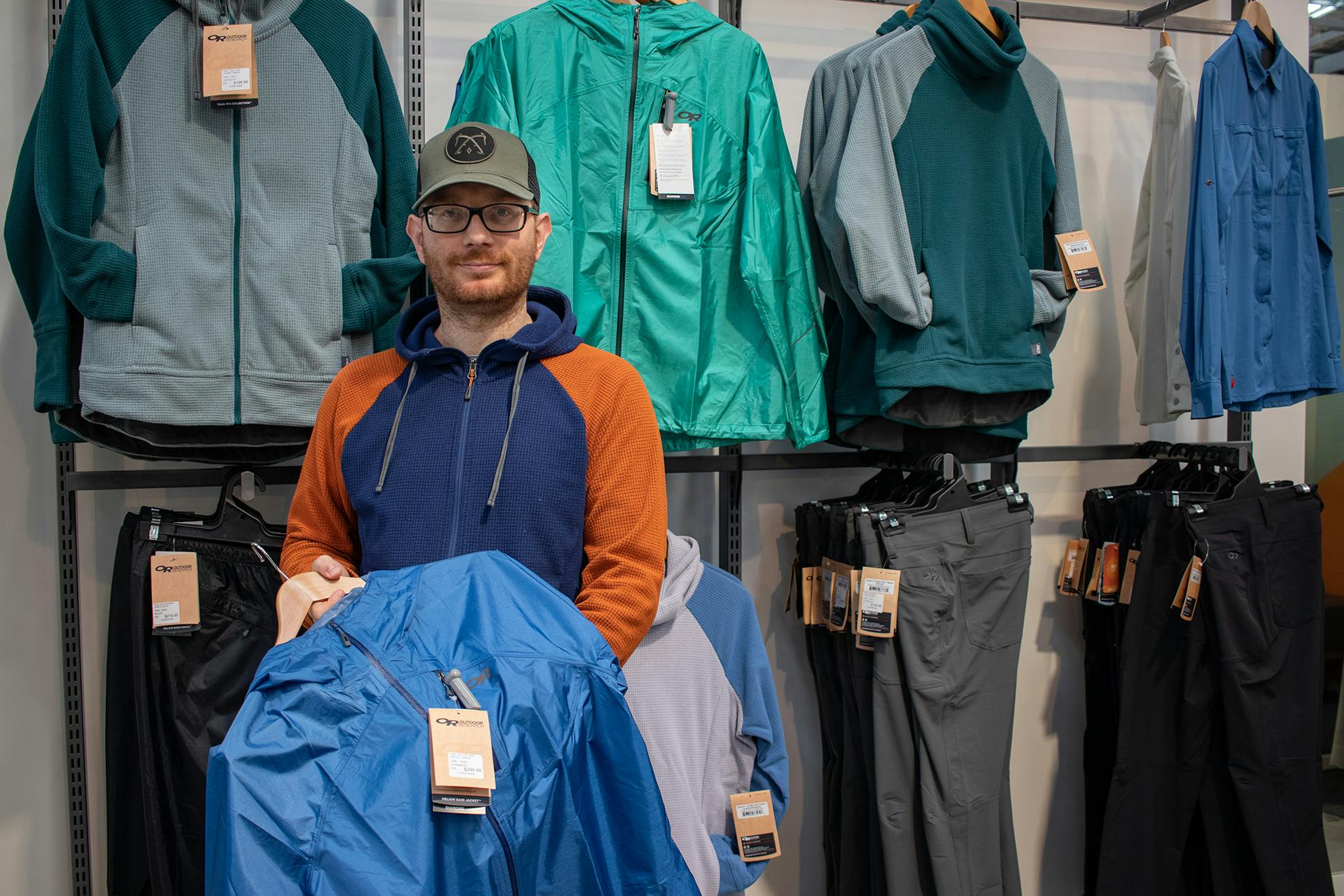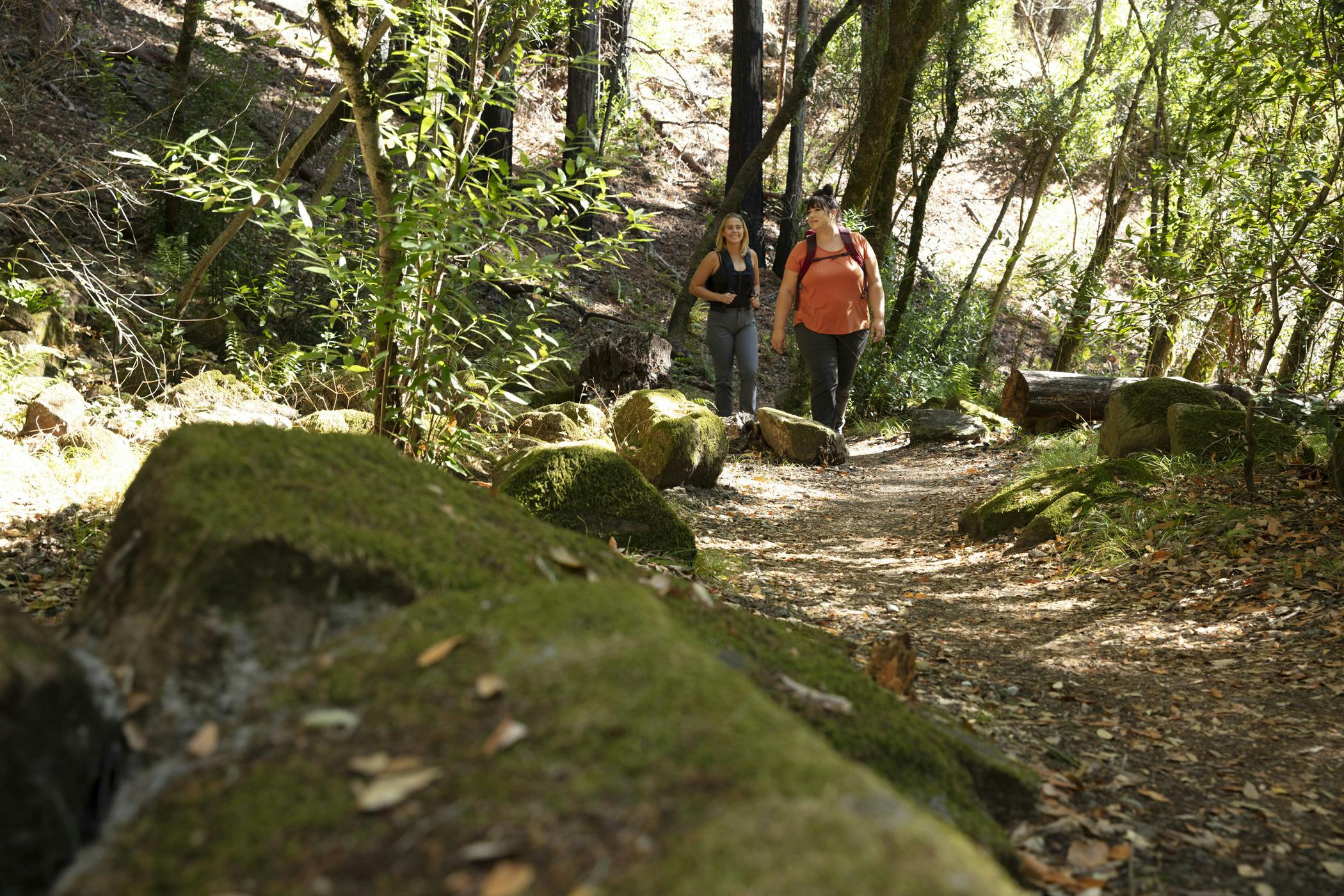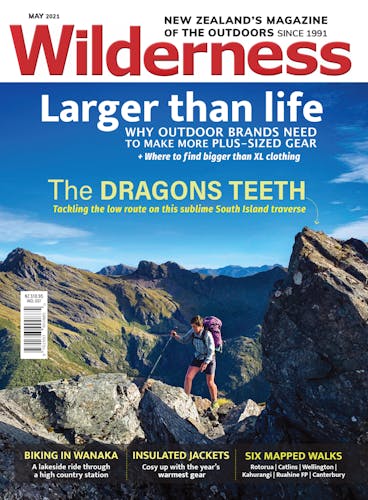Struggling to find tramping gear in sizes bigger than large or extra-large? Retailers are fast waking up to an emerging gap in the market, with new gear proving you don’t have to change your body to enjoy the outdoors.
I’m guilty of writing about plus-sized tramping gear while being a very much non-plus-sized size 12. Sometimes a size 10, sometimes a size 14. I went through a phase in my 30s where I was ‘overweight’ by BMI standards when I woke up in the morning but, due to that day’s weight gain, I was considered clinically ‘obese’ by the time I went to bed that night.
Fat is a feminist issue, and weight can be political. But slowly, marketers are cottoning on to the idea that big people tramp, too, and that not everyone who’s climbing hills is a size 8, white, straight, cisgender person with blonde hair and a bangin’ Instagram feed. Social media would have you think differently; follow enough Insta accounts about hiking and you’d not be blamed for thinking that everyone in the wilderness is thin, lithe and tanned, with the latest (fashionable, expensive) brands.
And yes, sorry, I’m going to employ the term ‘plus-sized’ while fully recognising that it eschews inclusivity. It creates a divide, saying ‘this is normal’ and ‘this is not’, which is hugely frustrating and alienating to so many people. But it’s a way into the discussion.
Man, I feel like a woman
Weight and size aside, I wonder if the cut of women’s tramping clothing doesn’t do us any favours. I find it’s often cut to look good rather than to be functional – a slim cut waist, tight around the boobies – but totally impractical on the track. More recently, I’ve opted for the men’s version of tramping clothes. It looks appalling, but it works.
Turns out, many plus-sized women agree. When I posted on Facebook asking for people’s opinions for this story, I was stunned, and overwhelmed; the sheer number of people who were dissatisfied with what they can find in stores was far higher than I was expecting. Women wearing men’s clothing was a common solution for the lack of women-specific larger sizes, with many opting for hunting gear. Stoney Creek is frequently mentioned as a top choice for both genders, and Hunting & Fishing and Gun City are cited as useful retailers.
Many women tramp in activewear, as leggings tend to be stretchy whereas trekking pants are made for a more straight, up-and-down shape and have no ‘give’. Lululemon is the surprise winner here, as their tights go up to a US size 20 (a size 24 in NZ), and Running Bare and Zeenya get honourable mentions from social media users.
One of the trickiest issues is the fit of raincoats, which often seem to come big and baggy except around the hips and bum, or with a fitted shape that is totally impractical when you’re wearing layers underneath and not to mention way too short.
“It’s so hard to find good quality rain jackets if you’re anything bigger than an NZ16/18,” said one tramper on Facebook. “It’s almost a safety issue – my current coat (made by Columbia) is probably below standard for hiking but actually fits with my pack on and a warm layer underneath.”
Another reckons: “Women’s fit should mean boobs and butts, not just less shoulder and pretty colours, especially in plus size, and especially in activewear where there’s likely to be some muscle to get around.”
For many, it’s a punch to their self-esteem. “I always feel short and fat after a trip to an outdoor clothing store,” said one. And one woman was told by a salesperson that they just don’t make hiking clothes for bigger people because “they don’t hike”.
However, demand is hard to substantiate. Said one user: “I doubt there’s no demand for plus-size clothing, I think ‘fat people don’t hike’ because they can’t find the gear!”
Packs are also an issue with too-small waistbands. One Facebook poster had to get a longer waistbelt put on to a pack but the manufacturer botched it and the tramper made a DIY solution with some straps and connectors so there’s an ‘extender’ in the middle: “A bit degrading, but functional.”
Sleeping bags are also an issue, as are gaiters that fit around larger calf muscles.
But some folk are taking matters into their own hands. Tramper Larkin Nightingale struggles to find gear that fits and she’s come up with a workaround: making her own, when it comes to underwear. “I sew, so I make my own merino underwear,” she said. “I’m going to make merino tights and tops this year and see how that goes. But there’s not much range available in New Zealand, and although in the past I’ve found plus-sized hiking gear on US websites, I’ve never bought any due to cost and the risk of them not fitting. Next time I go to the US, I’ll make it a mission to find some.”

Gap in the market
Dave Laffan, national purchasing manager for Bivouac Outdoor, reckons people should let them know if they’re not being well served by what’s in stores.
“The lack of larger sizes is a common complaint,” he says. “The body shapes of people enjoying the outdoors are changing and I’d encourage people to come and talk to our staff about what’s wanted because we don’t know what we don’t know – it can be hard to get solid information on this and hearing from our customers is our best resource.
“Manufacturers are definitely starting to wake up to the gap in the market for bigger sizes. The crucial thing for us as a retailer is for that to be supported by those brands through marketing and advertising campaigns – consumers need to know what’s available otherwise they just won’t come in store.
“It’s great to see there’s a real change starting to happen in the imagery and public portrayal of the sort of person who gets into the outdoors – we’re starting to see brands showing more diversity in their campaigns and also their language.”
For Bivouac, ‘standard’ sizes when stocking shelves means XS through to L for women and S to XL for men. Laffan has seen some evidence that there’s actually more demand for the smaller sizes in women’s clothing; they tend to sell around 15 per cent more XS sizes than L sizes, and Laffan suspects they’d sell more XXS sizes if they were available. There is – pardon the pun – a ‘sales curve’, meaning that the sizes in the middle of the ‘standard’ range (say, small and medium) sell the greatest volume, whereas volume tails off to not very much at all on either side of that curve. But there’s an information gap around what might sell.
“We’re listening to people and trying to improve what we offer – but we’re not perfect and we recognise we may never be able to please everyone,” Laffan says.
He reckons the lockdowns of Covid-19 could have been a driver in more demand for larger sizing, as it’s prompted more people to get into the outdoors. Short walks were the only way of getting out of the house during Level 4, and that’s then prompted more people into the outdoors and getting into tramping a bit more. As a result, people of all shapes and sizes are throwing out the idea that you need to be an Instagram stereotype to go tramping.
As one of our Facebook posters said: “Outdoors clothing suppliers have this ‘image’ in their head of who hikes/runs/etc in the outdoors and it’s not reflective of reality. Limiting size range needs to end.”
And it looks like things are shifting – albeit slowly.
Going large
So what are brands doing about it?
Kiwi brand Stoney Creek gets a top honourable mention. It started as a hunting brand in 1994 but has diversified to offer functional gear used across multiple applications. The gear is in around 300+ retail stores across the country – so while the brand is widely stocked, size availability is decided by store owners or buyers.
Lead designer Sarah MacDonald says she gets a huge amount of feedback about the size range of their products. “The personal feedback I’ve had is incredible when it’s face to face with customers. People just want to be enjoying their pursuit no matter what size they are. You get the same enthusiasm and excitement from someone who loves their gear – size doesn’t matter.”
Marketing director Brendon Li reckons the demand is definitely there in bigger sizes. “We often have a ‘big boys rack’ at Fieldays with a prominent 7XL sign on the rack and it’s the first thing to sell out. Customers are always surprised to learn we do such a wide size range, something they probably don’t see every day in the majority of stores.”
Macpac is well underway on a project, working with a group of adventurous folk who are helping the brand to refine and extend its size offerings, says apparel buyer Rachael Grooby.
“We’re working with a broad range of people to develop our fit and extend our size offer. We currently cater up to a women’s size 20 and a XXXL in most of our styles but we’ll have extended sizes in some key lines expected to be in stores in September this year. But that’s just the start of things for us, and we’re working with a broad range of people to make sure we get the fit right for as many customers as possible.”
Marmot New Zealand brand manager Dan Te Huia said demand is huge right now and things will shift quickly with much more volume available to purchase in the coming years. “Retailers’ attitudes are changing as well, they’re fielding more calls and having more conversations with consumers about plus-sizing, so the demand is definitely there. Manufacturers have more confidence in this category, which is enabling better forecasts to fabric suppliers and production plants.”
Marmot has its own outlet store in Taupo, and brought in a shipment of plus-size gear in 2020 and sold through it lightning quick. That included rain jackets, shirts, insulated vests, hoodies, pants and shorts, up to size 22. “If we could get stock today, we’d sell it tomorrow,” says Te Huia.
He reckons the mindset is shifting overall, too. Samples used to always come as a medium and now many come as a large. Another shipment of plus sizes was due last month – check your local Marmot stockist for more info.
It’s understood Outdoor Research is working on a range of extended sizing that will be out next summer – including outerwear, knit tops, down jackets, and ski wear. Patagonia is also working on it, and many other brands might also be.
In the meantime, for trampers wanting bigger sizes, there’s only one thing to do: campaign for it. Get in store, go on social media, send emails to the brands you want to buy. And once the gear is there, support it with your dollars.








